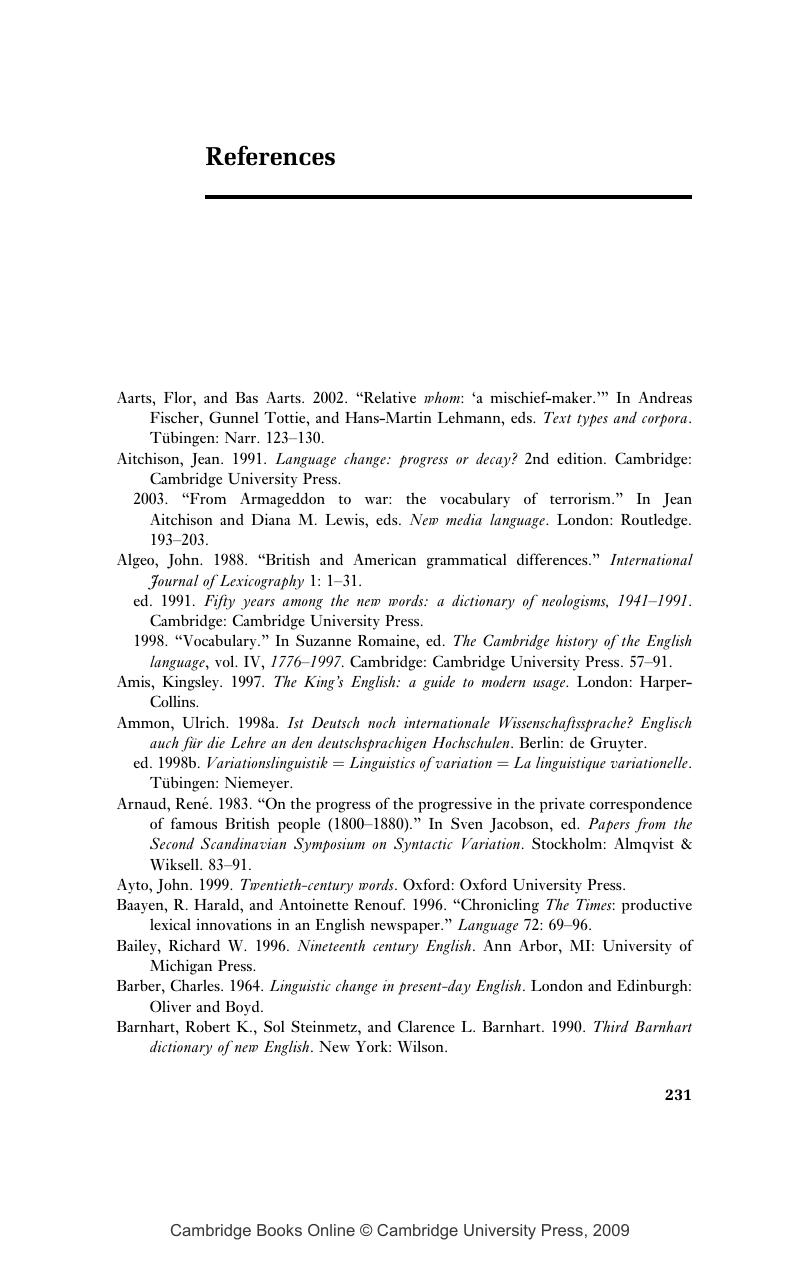Book contents
- Frontmatter
- Contents
- List of figures
- List of tables
- Acknowledgments
- 1 Setting the scene
- 2 Ongoing language change: problems of detection and verification
- 3 Lexical change in twentieth-century English
- 4 Grammatical changes in twentieth-century English
- 5 Pronunciation
- 6 Language change in context: changing communicative and discourse norms in twentieth-century English
- Conclusion
- Appendix 1 Brief survey of the corpora used for the present study
- Appendix 2 The OED Baseline Corpora
- Appendix 3 Estimating text size in the newspaper archives and the World Wide Web
- Appendix 4 A quarterly update of the OED Online (New Edition) – 13 March 2003: Motswana to mussy
- References
- Index
- References
References
Published online by Cambridge University Press: 22 September 2009
- Frontmatter
- Contents
- List of figures
- List of tables
- Acknowledgments
- 1 Setting the scene
- 2 Ongoing language change: problems of detection and verification
- 3 Lexical change in twentieth-century English
- 4 Grammatical changes in twentieth-century English
- 5 Pronunciation
- 6 Language change in context: changing communicative and discourse norms in twentieth-century English
- Conclusion
- Appendix 1 Brief survey of the corpora used for the present study
- Appendix 2 The OED Baseline Corpora
- Appendix 3 Estimating text size in the newspaper archives and the World Wide Web
- Appendix 4 A quarterly update of the OED Online (New Edition) – 13 March 2003: Motswana to mussy
- References
- Index
- References
Summary

- Type
- Chapter
- Information
- Twentieth-Century EnglishHistory, Variation and Standardization, pp. 231 - 241Publisher: Cambridge University PressPrint publication year: 2006



